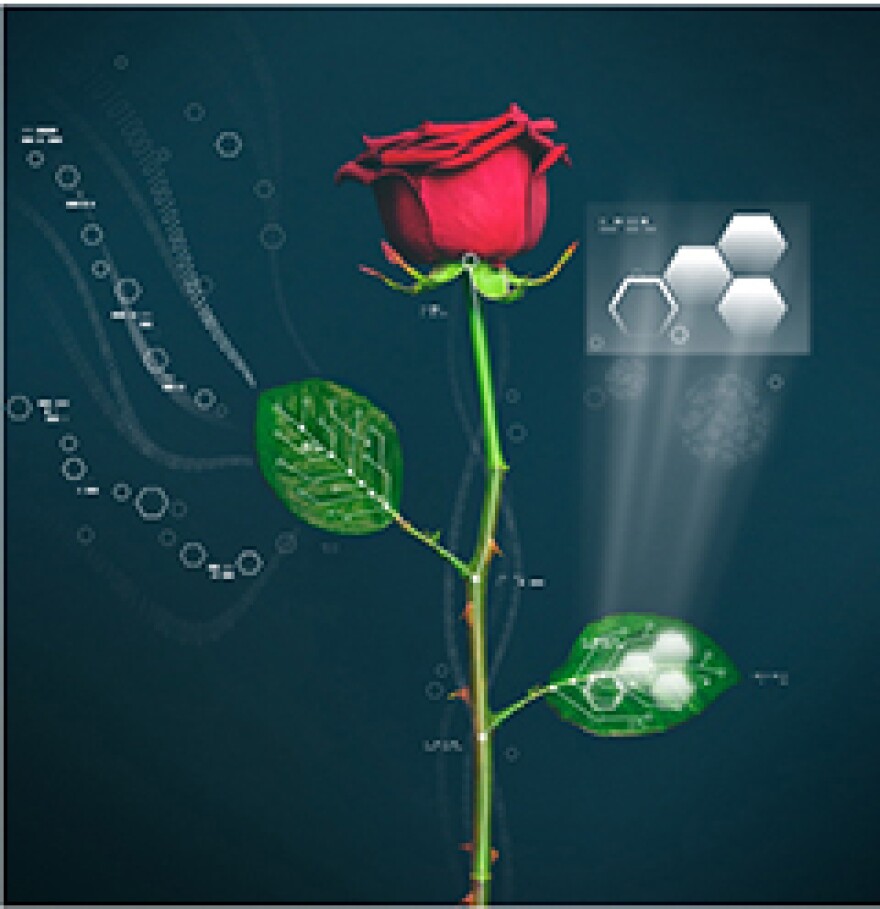University of Cincinnati graduate Eliot Gomez, now doing research in Sweden at Linköping University, has demonstrated with other scientists the world's first electronic plant. In the future this technology could possibly power small electronic devices or delay blooming if there was a frost.
Here's how he put "wires" into a rose while being careful not to clog the plant or kill it:

- Plant cuttings were soaked in a water-soluble polymer
- The plants absorbed the water and distributed the hardened polymer throughout
- The conductive "wire" combined with naturally occurring electrolytes in the plant and created a transistor which converts the electrochemical signals into electrical output, according to the New York Times.
The research is published in the journal Science Advances. Here's the abstract:
The roots, stems, leaves, and vascular circuitry of higher plants are responsible for conveying the chemical signals that regulate growth and functions. From a certain perspective, these features are analogous to the contacts, interconnections, devices, and wires of discrete and integrated electronic circuits. Although many attempts have been made to augment plant function with electroactive materials, plants’ “circuitry” has never been directly merged with electronics. We report analog and digital organic electronic circuits and devices manufactured in living plants. The four key components of a circuit have been achieved using the xylem, leaves, veins, and signals of the plant as the template and integral part of the circuit elements and functions. With integrated and distributed electronics in plants, one can envisage a range of applications including precision recording and regulation of physiology, energy harvesting from photosynthesis, and alternatives to genetic modification for plant optimization.
According to Gomez, "By giving the plants a "central nervous system" we can monitor the plants or regulate plant hormones we might be able to tap into some things that the plants are really good at." Such as producing energy or harvesting energy from the sun through photosynthesis.

He says, "The agriculture industry is starving for tools to be able to control plant physiology, such as making a plant bloom or increasing its yield or maybe delaying it if frosty weather is coming in."
It doesn't produce energy yet. But when that happens Gomez speculates there would at least be enough energy to power the plant itself. "This is the first big step in a new direction."



